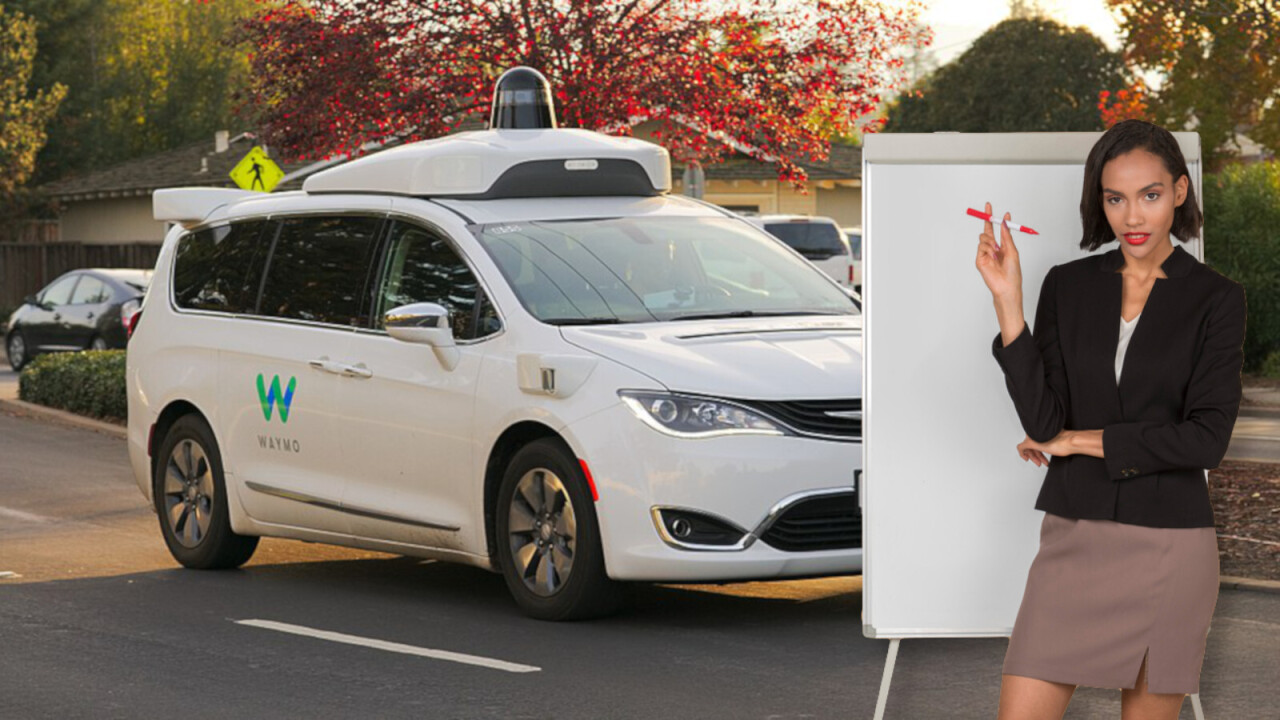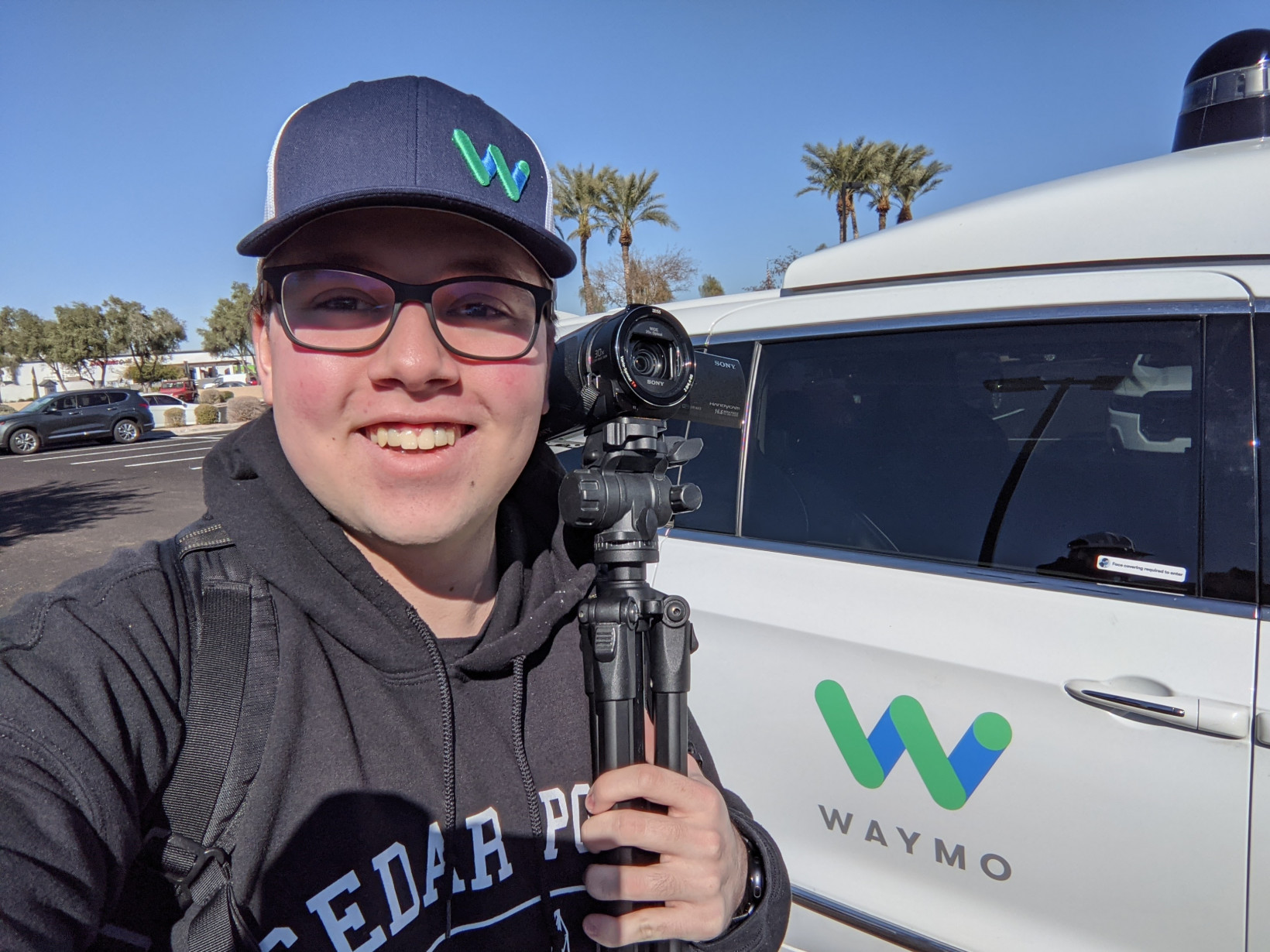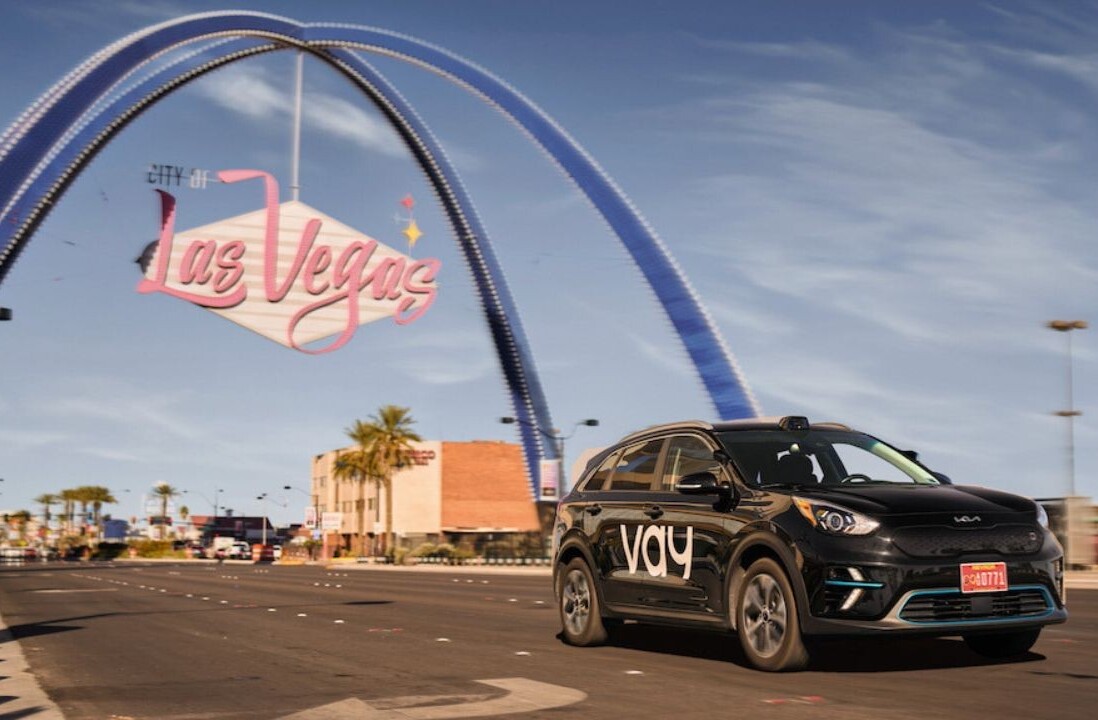
Elon Musk and Uber have both made claims that there’d be millions of driverless taxis on our roads by now and, well, there aren’t. Most of us will have to wait a lot longer before we can take a ride in a one, but thanks to the wonders of the internet we can get a pretty good idea of what the experience is like right now.
It’s important to note that true, fully autonomous vehicles do not exist. To say they are fully autonomous is heavy handed.
There are some commercial tests taking place, but they are heavily geo-fenced and continually monitored. They are far from being cars capable of driving in all conditions.
One such test comes from Waymo, Google’s self-driving off shoot. It’s been running a fleet of private “self-driving” taxis since 2015, and in April 2017 it launched its Early Rider Program in Phoenix Arizona, to offer its service to real air-breathing humans.
In 2018, it commercialized its service to offer rides to the public in a 50-square mile area of the city. While the company claims that hundreds of people use the service everyday, the platform has one user in particular that may have taken more rides than anyone else.
Frequent rider
Meet Arizona-based student, YouTuber, and self-driving car superfan JJ Ricks. Ricks is one of the internet’s most frequent users of self-driving taxis, and he documents his experience on YouTube for us all to follow.

I spoke with JJ earlier this month to get to grips with what it’s really like to be a passenger in a car that can drive itself.
Becoming an early rider?
JJ Ricks, which is a play on his real name Joel Ricks Johnson, is fortunate enough to live in Phoenix, Arizona, where he was a full-time student until the pandemic struck.
JJ was one of the first to climb aboard a Waymo taxi when it offered its public service, and has been riding in them since 2019. “I was right on top of their December 2018 Waymo One launch,” he tells me.

“I immediately emailed their PR team asking how I could be part of it… six months later I got an acceptance email out of the blue!” he exclaims.
That acceptance email was for Waymo’s selective Early Rider Program, the closed trial of its self-driving taxi service, making him a member of a very exclusive group.
In our community of transport and mobility nerds, we read a lot about how Waymo is testing its self-driving cars — but few of us actually know what happens in one, and even fewer use them regularly.
It’s not surprising that no-one really talks about what goes on inside a Waymo. The Early Rider Program was highly selective, and those that were accepted were held under strict non-disclosure agreements.
As an avid fan of autonomous vehicles, JJ was keen to share his experiences, but, like everyone else on the Early Rider Program, JJ was under the grip of an NDA.
In January 2020, JJ heard an interview with Waymo’s then CEO John Krafcik, in which he criticized the fact that no one was sharing their experience on social media.
“I pointed this out to them on Twitter, and two months later I found my NDA lifted,” JJ told me.
However, JJ’s plans to start telling the world about what it’s like being a Waymo passenger were scuppered. Due to the coronavirus pandemic, Waymo paused its services between March and October 2020. At the end of last year, though, he was finally able to begin making videos to show us all what it’s like being a passenger in a driverless Waymo.
Riding shotgun in a driverless taxi
The first thing I wanted to find out is just how scary is it? How many moments of terror are there?
Despite the rollercoaster of disengagements in the video above, JJ says that terrifying moments are actually “very few and far between.”
He’s ridden nearly 1,000 miles across 120 journeys so far, and he says he’s never been more than “lightly nervous.”
Even in one of his most recent videos, where a Waymo taxi struggled to make sense of road works, had a meltdown, held up traffic, and then evaded company support workers by engaging and disenging numerous times, JJ was at ease, and found the whole situation more amusing than terrifying.
It’s clear to him that Google has put a lot of effort into rider comfort and reassurance. If he’s ever concerned about what’s going to happen next, he can take a glance at the rider screen, which renders what the car is “seeing” and he can work out what the car is planning to do.
If that’s not enough to allay his nerves, he can contact rider support and speak to a human within 15 seconds. They can then ensure the car is operating as it should and intervene if it’s not. In the aforementioned video, the whole time the taxi is having its “meltdown” in the face of road works, JJ is in conversation with Waymo support.
That might all sound like a lot of work for a passenger in a car that’s supposed to drive itself, but remember this is testing and Waymo still has a long way to go before it unleashes a nationwide fleet. Indeed, when a driverless taxi blocks traffic, and struggles to understand an uncommon but not unusual drivnig scenario, it’s clear the system is far from finished.
Scarier times
The scariest moment JJ mentions was when the Waymo taxi took an unprotected left turn in front of oncoming traffic. Even with human drivers this is still a dangerous maneuver. It requires the driver to position themselves appropriately, be aware of oncoming traffic, and ensure the exit is clear, all at speed.
I know it can perfectly calculate the speed of oncoming traffic and wouln’t complete the turn if unsafe, but it was quite the experience.

Amazing Waymo moments
Speaking to JJ it seems that being a passenger in a Waymo is more stunning than it is scary.
Perhaps JJ is so at ease with the tech because his first 20 or so rides were with a human safety driver, and he has been softly introduced to how the technology works. In many ways, he’s a bit of an expert on what it’s like now, which comes with its own level of self-reassurance.
Even so, in the beginning it was a surreal experience, one that starts with excited disbelief and is followed by relaxation as you gain confidence in the autonomous vehicle, he explains.
Now, more than 120 rides in, JJ is completely used to the experience. I don’t think I’ve taken 120 regular taxi rides in my life, so this level of experience might be unattainable for most.
One of Waymo’s most impressive demonstrations of driving prowess was as it navigated a Costco parking lot filled with people, JJ says.
About 50 pedestrians were perfectly rendered on the screen, “all bustling about.” The car slowly inched forward through the crowd as it navigated and changed its route accordingly. “It’s absolutely amazing, and still just as impressive every time I go back there,” he tells me.
You get used to it surprisingly quickly! Every guest I’ve brought along with me agrees, enthusiast or otherwise.
It seems, as with any other technology, once we get over our initial fears, we become quite content to blindly trust the machines.
Driving into the future
From where I’m sitting, it sounds like Waymo is making solid progress, albeit slowly.
It’s been about six years since Google’s self-driving spinoff carried its first passenger without a driver on public roads, but these rides are now happening every week.
Even so, Waymo is taking its time to roll out its driverless vehicles. Back in 2018, Bloomberg reported that Waymo was close to starting its first driverless car service. But three years later, the platform is still in testing.
Waymo is taking a reserved approach all in the name of safety. Over a 20-month period, its taxis drove 6.1 million miles and were involved in 18 accidents, none of which proved fatal, which is a positive of sorts.
We must always remember, though, that the cars are being tested in a extensively mapped, geo-fenced, 50-square mile area of Phoenix. It’s hardly indicative of how they’d fare if unleased in cities which Waymo doesn’t know as well.
As the video below shows, the teach is far from finished. The car struggles in heavy rain, disengages, and calls for a human driver to take over.
These ‘disengagements’ seem to be becoming less common though.
In 2019, when the vehicle faced challenging obstacles, it would immediately hand over to the driver. By early 2020, it was capable of negotiating more hazards, but it didn’t do so smoothly. Now, “it doesn’t even bat an eye” when navigating hazards, Ricks says.
From Ricks’ generally positive experiences it’s clear Waymo’s tech is improving, but the company is still facing challenges to make self-driving cars a reality for us all.
A rough road ahead
Back in March 2020, after more than 10 years of taking money from the bank of Mum and Dad (Alphabet and Google), Waymo took $2.25 billion of outside investment.
Some might see this as a sign that self-driving cars are still a sure thing in our future of mobility.
However, consider this alongside the fact that Waymo’s valuation has been steadily falling, and it paints a different picture.
Over the past few years Waymo’s valuations has gone from $175 billion to $105 billion. When it took that last $2.25 billion investment, its value wasn’t disclosed but some suggest it could have been as low as $30 billion.
Fast forward to this year, and Waymo’s new CEOs, Dmitri Dolgov and Tekedra Mawakana, say the company is eyeing further outside funding. While Waymo is very much still in the game, it seems to be just about hanging on.
Uber and Lyft however — two of self-driving’s biggest players — have exited the market over the past year.
We can probably expect Waymo to stick around for awhile — Google is no stranger to keeping loss-making pie-in-the-sky ideas going longer than it should. However, with the valuations of self-driving car companies tumbling, investors are becoming less certain of their potential ROI than ever before.
Back to reality
Ricks’ experiences demonstrate the reality for what it is: Waymo taxis can indeed drive themselves in most cases, and they have improved noticeably over the past few years. But there is one large caveat: they can only do it in a very specific area of Phoenix, Arizona, and they still struggle in fairly common situations.
The tech is far from the finished product, and certainly not something that can be rolled out globally, or even nationally in the US, any time soon.
If it takes 60 rides to get used to having no human driver in the car, there will be a huge uphill battle for these taxis to gain public trust and achieve any kind of mass adoption.
As long as there are enthusiasts like JJ though, you can guarantee that someone, somewhere will continue trying to crack the self-driving taxi code.
Do EVs excite your electrons? Do ebikes get your wheels spinning? Do self-driving cars get you all charged up?
Then you need the weekly SHIFT newsletter in your life. Click here to sign up.
Get the TNW newsletter
Get the most important tech news in your inbox each week.




